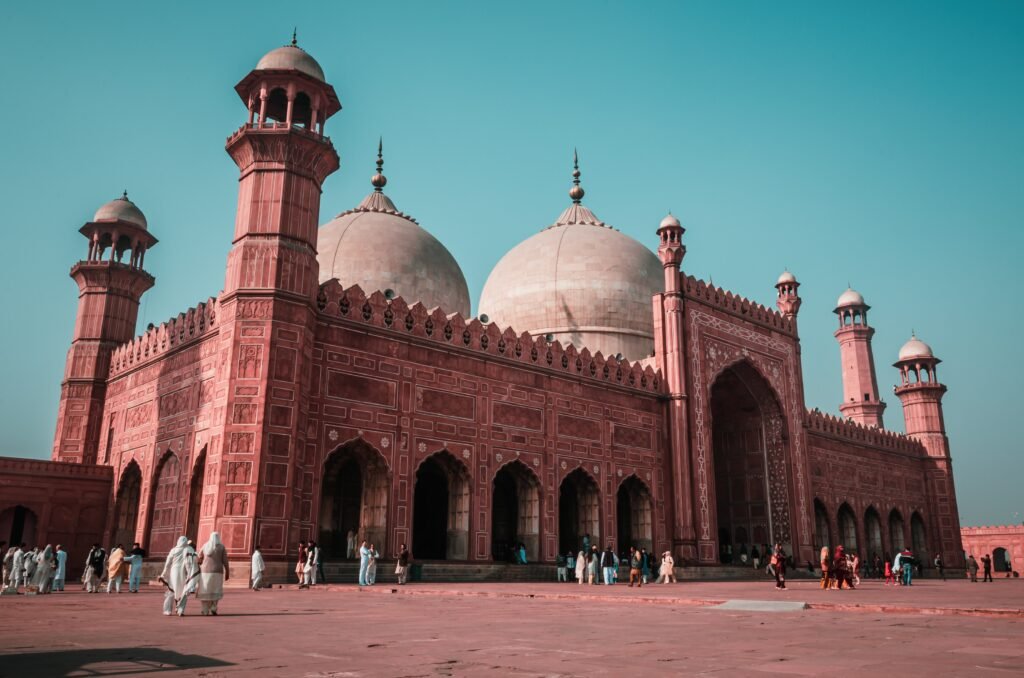Badshahi Mosque Lahore | History of the world’s biggest Mosque of the 17th century | 2nd Biggest Mosque of Pakistan
Badshahi Mosque, Lahore Pakistan Badshahi Mosque, Lahore Pakistan is one of the most significant examples of Indo-Islamic architecture from the Mughal era. It was constructed between 1671 and 1673 during the Mughal emperor Aurangzeb era. At that time it was the biggest mosque of the world but now a days it stands as seventh or eigth biggest mosque of the world and 2nd in Pakistan. Facing the famous Alamigiri Gate, the mosque is situated next to the Lahore Fort, which is a portion of the WHS Fort and Shalamar Gardens. Sikh Rule During Sikh Rule, Badshahi Mosque suffered severe damage and misuse. During their dominance over Lahore, the Sikhs utilized the mosque as a horse stable for their numerous horses, camels, and other animals. In addition, they would take items like marble, rubies, gold, and other jewels from the mosque. Muslims were only allowed a limited area outside the mosque to worship, while Sikhs prevented them from entering the building altogether. British Rule The mosque was utilized by the British for military training, including rifle and cannon fire ranges, even after they seized control of India. Sensing that Muslims harbored animosity toward them, the British destroyed much of the mosque’s wall, making it useless as a hub for anti-British plotting. Afterwards, as a gesture of goodwill, the British gave the mosque back to the Muslims, despite the fact that abuse and neglect had left the building in poor condition. Restoration of Mosque The sacred site was brought back to its former splendor by the Badshahi Mosque Authority. Starting in 1852, only haphazard repairs were overseen by the Badshahi Mosque Authority. Between 1939 and 1960, the Authority spent 4.8 million rupees on significant repairs. The mosque’s original form and condition were restored by those repairs. Nawab Zen Yar Jang Bahadur, an architect, created the repair blueprint. Marvelous Architecture of Badshahi Mosque Red Sandstone Symphony Every visitor is mesmerized by the mosque’s exterior, which is embroidered with elaborate red sandstone. The Mughal era is brought to life for guests with each intricately carved feature. Grandeur of the Courtyard As soon as you enter the spacious courtyard, the mosque’s immense size will astound you. The vast courtyard exudes peace and amazement as it is encircled by four majestic minarets. Lahori Mosaic Tiles A remarkable example of artistry can be seen in the inside with the elaborate Lahori tile mosaic. A pleasing visual experience is produced by the vivid mosaic, which gives the calm white marble a pop of color. Size It is hard to imagine the immensity of Badshahi Mosque. It was maybe the biggest structure in the globe in the seventeenth century. The mosque could hold up to 50,000 worshippers at a time for prayers. That is the size of numerous sports arenas. The Badshahi Mosque Today: A Center of Culture Tourist spot The Badshahi Mosque is one of the most popular tourist destinations in Pakistan, drawing both visitors and history buffs. It is a must-visit location because of its historical significance and magnificent architecture. A Place of Worship The mosque continues to be a active center of prayer and religious studies, even in light of its historical significance. The calm atmosphere is frequently consoling to visitors. Much as the Hagia Sophia in Constantinople from the sixth to the fifteenth century showcased Eastern Orthodox Christianity, the Badshahi Mosque demonstrates the great majesty and spirituality of Islam. Conclusion In conclusion, the Badshahi Mosque is a precious gem in the crown of Lahore. Badshahi Mosque invites people to immerse themselves in the rich tapestry of history as a representation of Mughal grandeur. It is a genuine jewel in the cultural crown of Lahore because of its striking architectural design, cultural significance, and ethereal ambiance. Make plans to see the Badshahi Mosque and its enduring beauty.



